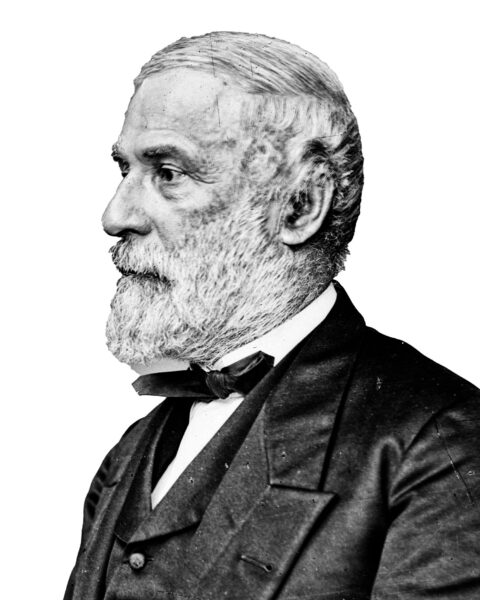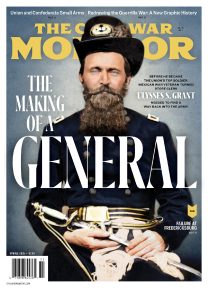 REUNION AT GETTYSBURG
REUNION AT GETTYSBURG
I am a 74-year-old Vietnam War-era veteran. Two years ago my U.S. Navy squadron held a 50th reunion. I saw many men I had served with proudly. They were like brothers to me. Many of us hugged and cried as old men having not seen each other in decades. We enjoyed a very special camaraderie—a treasured, emotional time together.
You could say I am a Civil War nerd who started at age 10 going on class trips to Virginia Civil War battlefields during the Civil War Centennial. I was fascinated with that part of our history, and wanted to learn everything I could about it. It’s an intense interest I’ve had all my life. I first saw the Gettysburg battlefield at the age of 12, and studied that particular engagement more than any other, reading many books and assembling a library of over 80 works on it alone. Over my lifetime I have visited Gettysburg six times. I have no idea why that particular battle has held such a grip on me.
I have enjoyed your publication for many years and your Summer 2025 issue really struck a nerve. I knew about and had seen photos of the 1913 reunion held at Gettysburg, but never such a concentration of them [“Reunion at Gettysburg,” Vol. 15, No. 2]. I want to thank you for devoting 16 pages to that reunion.
I cannot describe to you how much I suddenly related to these men and this incredible event. It was very emotional for me. Thank you so much for being such an incredible instrument, portraying our history of that conflict, and giving these old men, long gone, the attention they deserve. I will continue to enjoy the stories in your excellent publication and wish you continued success.
Glenn H. Chapman
Kingston, New York
* * *
The photographic article about the 1913 Gettysburg reunion in your current issue was outstanding. I don’t think I’d ever before seen any of the images that were included except the one of the old vets reenacting Pickett’s Charge. All of the photos were interesting, some of them very moving, and I also appreciated the details of the event included alongside them.
Thanks for a wonderful article—and another great issue.
Tom Benning
Via email
* * *
Congratulations on another stellar issue of The Civil War Monitor! Hands down, the highlight for me was your 16-page cover story on the 1913 Gettysburg reunion. Whoever put it together selected some wonderful images to help tell the story of that extraordinary event, which deserves to be much better known.
As the author of a book about the reunion—The World Will Never See the Like: The Gettysburg Reunion of 1913 (Savas Beatie, 2024)—I’ve spent a lot of time poring through photos in the Pennsylvania State Archives and the Library of Congress. You made great choices!
Thank you for putting out a magazine of unfailingly high quality year after year.
John L. Hopkins
Via email
* * *
Your Summer issue’s cover feature on the 50th anniversary reunion of the Battle of Gettysburg was excellent. There is a story I’d like to add. The article mentioned the 180 Union and 120 Confederate veterans who gathered at the stone wall at the Angle to commemorate—and reenact—Pickett’s Charge.
One story I read was that some of the northern vets greeted some of the southern vets in something less than the old “let bygones be bygones” way you might expect at such a reunion. It was more along the lines of, “You $#%@! You didn’t take this wall 50 years ago and you’re not going to take it today!”
One can only be glad audio equipment wasn’t invented yet.
Michael Skaggs
Paris, Tennessee
IRON BRIGADE
In James Marten’s excellent article on Rufus Dawes [“Rufus Dawes’ Civil War,” Vol. 15, No. 2], he repeats the myth of John Gibbon’s brigade earning its “Iron Brigade” nickname on September 14, 1862, during the fighting at Turner’s Gap on South Mountain. This falsehood first appeared in 1886 and was hotly debated by veterans of Gibbon’s “western” Iron Brigade and the “eastern” Iron Brigade well into the 1900s.
While both units were known by that nickname during the war, it was the eastern brigade, comprised of New York regiments, that acquired it first. Only after this original Iron Brigade mustered out of service in the spring of 1863—and Gibbon’s brigade assumed the New Yorkers’ former position as the First Brigade in the First Division of the Army of the Potomac’s I Corps—did the western unit assume the nickname. Again, there is no contemporary evidence of Gibbon’s western brigade acquiring that nickname for their assault at Turner’s Gap, which was the only unsuccessful Union assault at the Battle of South Mountain.
Thomas Clemens
Via email
KUDOS
My compliments to the authors whose work was included in your latest issue for their fine, clear, and spare writing. I particularly enjoyed the Rufus Dawes story by James Marten. His clear descriptions made me understand the life of this man so well. Compliments also to David Gerleman for his article [“A Prisoner’s Story,” Vol. 15, No. 2]—he really brings the reader into the experience of these prisoners of war. Both are examples of great writing for popular history fans!
I hope to read more from both these authors and just en- joyed the whole issue overall.
Toni Criscuolo
Via email
* * *
I just renewed my Monitor subscription and was happy to do so. I’ve been enjoying your exceptional coverage of the Civil War, both on and off the battlefield, for years. I especially like the Books & Authors section.
Mike Anderson
Via email
THE BUTLER MEDAL
One minor correction to your Summer 2025 issue: On page 18 [“Cost of War: The Butler Medal,” Vol. 15, No. 2], the Latin inscription on the medal is translated in the past tense, though the verb is in the future tense. It should read, “Liberty will come to them by the sword” not “Liberty came to them by the sword.”
It’s always a joy to receive The Civil War Monitor.
Leon Nicholas
Via email
GRANT’S EARLY DAYS
I enjoyed the article in your Spring 2025 issue on Ulysses S. Grant’s search for a commission at the start of the war [“The Making of a General,” Vol. 15, No. 1]. I have read Ron Chernow’s Grant biography, but don’t remember the details about Grant clerking in Springfield, Illinois, before a military position to his liking became available. For the Mexican War vet, serving as a clerk must have been humiliating. Grant’s quote about observing George McClellan’s aides as he waited outside the general’s office in hopes of securing an audience with him—“[S]o many men at an army head-quarters with quills behind their ears”—was especially relevant to me as my great-grandfather transferred from his position as an infantryman to an army clerkship. For him, this was a wonderful promotion, one that got him away from the front lines. For Grant, it was just the opposite.
The overall quality of your magazine impressed me.
S.R. Gage
Ontario, Canada


